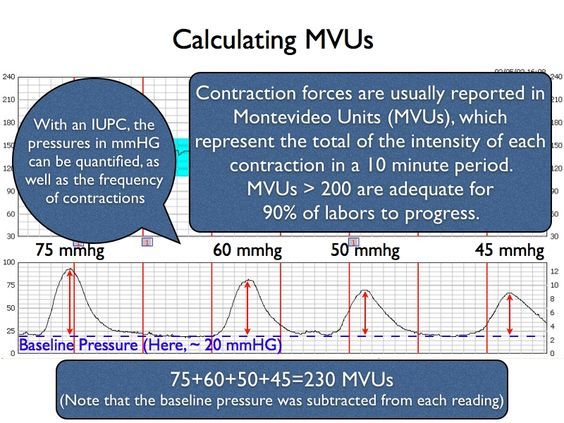Contractions become more regular until they are spaced less than 5 minutes apart. By monitoring the severity of the pain of contraction of labor you will notice an increase in intensity.

Stages Of Labor And Delivery Techniques You Need During First And Second Stage Of Labour Your Breathing Techniques For Labor Birth Advice Stages Of Labor
An example is contractions lasting 60 seconds and coming five minutes apart for an hour.

. The relaxed or mildly contracted uterus usually feels about as firm as a cheek a moderately contracted uterus feels as. The uterine wall is easily indented during contraction. At this stage there is no doubt you are in labor.
Click again to see term. Isotonic contractions generate force by changing the length of the muscle and can be concentric contractions or eccentric contractions. The character of contractions varies with the stage of labor and the bodys response to labor-inducing drugs if administered.
For comparison during true labor the intensity of a contraction is between 40-60 mm Hg in the beginning of the active phase. A Montevideo Unit is the sum of the intensity of each contraction in a 10 minute period in mmHG. Mild contractions are often described as feeling like the tip of the nose moderate contractions like the chin and firm contractions like the forehead.
Timing the amount of time between the ending of one contraction and the beginning of another would determine frequency. Contractions become increasingly more intense frequent and. Maximum uterine pressure above basal tone in mmHg.
Imagine your contractions as looking like a wave. They may start as much as 20 minutes apart but will become progressively shorter as this phase ends. With an IUPC in place quantitative data can be measured most commonly using Montevideo units MVU.
Intensity of contraction Definition. If the contractions dont go away and start far from each other and gradually get closer and. How is the frequency of contractions determined.
The intensity of Braxton Hicks contractions varies between approximately 5-25 mm Hg a measure of pressure. May start as infrequently as every 10-15 minutes but usually accelerate over time increasing to contractions that occur every. Eccentric contractions cause muscles to elongate in response to a greater opposing force.
Contractions change intensity. These contractions do not get closer do not increase with walking do not increase in duration and do not feel stronger over time as they do when you are in real labor. Each contraction usually lasts about 30 to 45 seconds.
Strength of the contraction. Here is 15 Ways Women Have Described Contractions. A concentric contraction causes muscles to shorten thereby generating force.
Area of contraction above baseline pressure in mmHg seconds. The intensity of the contractions can be estimated by touching the uterus. Your contractions are more consistent more painful and closer together.
Contractions that lead to labor have the following characteristics. From Sleeping through contractions to Electric Shocks the different ways women interpret contractions can be on opposite ends of the spectrum something people who havent gone through labor may not have expected. It is evaluated with palpation using the fingertips on maternal abdomen and is described as mild moderate or strong.
Contractions are at their most intense during the active labor and transition stages. Number of contractions in a 10 min period. Mild contractions usually begin at intervals of 15 to 20 minutes and last 60 to 90 seconds.
How can the duration of the contraction be assessed. Placing a hand on the fundus and assess the intensity duration and frequency of the contraction measuring the indentation. Lets start of with a rare way to describe contractions.
Active labor is still first-stage labor but it is more intense than early first-stage labor. Uterine contraction palpation provides information about the frequency duration and intensity of contractions and the relaxation time between them. As labor advances contractions become more intense occur more.
There are a number of things you can do to deal with the pain both with and without drugs. Here are some terms you can use to describe the pattern of your contractions. Palpating the maternal abdomen right after a contraction ceases would determine resting tone.
Noting the beginning time on one contraction to the beginning of the next. Many mothers describe contractions that occur in early labor as similar to menstrual cramps or as severe gas pains which may be confused with flu symptoms or intestinal disorders. Active labor contractions feel similar to early labor contractions but stronger.
The terms mild moderate and strong are used to describe contraction intensity as palpated by the nurse. Adequate uterine activity is defined as a contraction pattern that generates greater than 200 MVUs. Duration in seconds between onset and offset of contractions.
Intensity is the strength of the contractions. Each contraction will gradually gain in intensity until the contraction peaks then slowly subside and go away. Mild intensity of contraction.
Intensity is evaluated by palpating the fingertips on the maternal abdomen. Contractions are considered regular when the duration and frequency are stable over a period of time.

Labor Flow Chart Flow Chart Field Guide Active Labor


0 Comments